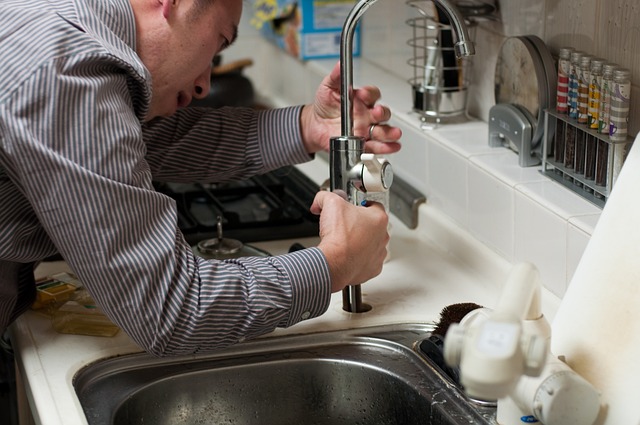Choosing the right service for your dripping faucet can be a daunting task, especially if you’re new to handling household repairs. With an overflow of options in the market, it’s easy to feel overwhelmed. However, fear not! This beginner’s guide is here to simplify the process and equip you with the knowledge needed to make an informed decision. We’ll walk through essential factors to consider when selecting a service for your dripping faucet, ensuring that you find a reliable and cost-effective solution.
Understanding your specific needs and evaluating different service providers will be key in this journey. By the end of this guide, you’ll have the confidence to choose a service that fits both your requirements and budget. Let’s dive into this exploration together!
Table of Contents
ToggleRecognizing the Urgency of a Dripping Faucet
Impact on Water Bills
A dripping faucet may seem like a minor issue, but it can have a significant impact on your water bill. Even a slow and steady drip can add up to gallons of wasted water over time. This not only contributes to unnecessary expenses but also has an adverse effect on the environment due to water wastage. The constant flow of water from a dripping faucet leads to an increase in your monthly utility bills, which could have been easily avoided by addressing the problem promptly.
When left unattended, even the tiniest drip can result in substantial financial consequences. For instance, if a faucet is leaking at one drip per second, it could waste around 3,000 gallons of water annually. This amount of wasted water will inevitably reflect in your utility bills.
Potential Damage to Fixtures and Surfaces
Beyond its financial implications, neglecting a dripping faucet can lead to damage within your home. The continuous flow of water from the leaky spout can cause erosion and corrosion over time, especially if you have fixtures made from materials such as copper or brass. These damages may require costly repairs or replacements that could easily be prevented by addressing the issue early on.
Moreover, surfaces surrounding the drip are also at risk for damage due to exposure to moisture over extended periods. Excessive moisture accumulation resulting from persistent dripping can lead to mold growth and deterioration of surfaces such as countertops and cabinets.
Environmental Impact of Water Wastage
The environmental impact caused by ignoring a dripping faucet should not be underestimated either. Every drop counts. A single household with multiple leaks across various faucets collectively contributes significantly towards global water wastage.
Wasting clean drinking water through avoidable leaks puts pressure on natural resources while contributing unnecessarily to energy consumption associated with treating and distributing potable water.
Essential Tools for Faucet Repair
Basic Tools
Having the essential tools is crucial. A few basic tools are indispensable for most faucet repairs. These include an adjustable wrench, screwdrivers (both flathead and Phillips), and pliers. With these simple tools, you can tackle common issues like leaky handles or loose fittings.
Having Teflon tape on hand can help seal threaded connections effectively. This inexpensive yet versatile tool can prevent leaks in pipe fittings and plumbing fixtures.
Specialized Tools
For more complex faucet types, specialized tools may be necessary. For instance, cartridge faucets often require a cartridge puller for removal. Similarly, if dealing with a ceramic-disk faucet, having a specific wrench designed to fit the hex nut securing the disk is essential.
Moreover, when repairing ball-type faucets commonly found in older homes, owning a set of ball valve seats and springs will come in handy as they frequently need replacement due to wear and tear.
Importance of Having the Right Tools
Having the right tools readily available not only saves time but also ensures that repairs are carried out accurately and efficiently. When confronted with a dripping faucet or any other plumbing issue, being able to swiftly access the necessary tools eliminates unnecessary delays in resolving the problem.
Furthermore, using improper or makeshift tools can lead to damage to delicate parts of a faucet assembly or result in ineffective repair attempts that exacerbate existing issues.
Identifying Your Faucet Type
Differentiating Types
Understanding the different types of faucets is crucial. There are four main types: cartridge, ball, ceramic disk, and compression faucets. Each type has unique components that require specific tools and techniques for repair.
Cartridge faucets use a hollow metal or plastic cartridge with rubber O-rings to control water flow. Ball faucets feature a single handle that operates by moving a rounded ball-like cap over the base of the faucet. Ceramic disk faucets contain two ceramic disks that slide over each other to regulate water flow, while compression faucets have separate hot and cold handles that tighten down to close off the water flow.
Visual Identification
Visual cues play an essential role in identifying your faucet type accurately. Cartridge faucets typically have a single handle and require you to remove its decorative cap before unscrewing the handle screw underneath. Ball-type fixtures usually have a lever-style handle atop a domed cap attached directly to the spout base.
Ceramic disk models often display sleek designs with minimalistic handles and require you to lift off their decorative caps before accessing screws beneath them. Compression fixtures are recognizable by their separate hot and cold handles connected through valves under each handle’s respective cover plate.
Understanding which type of faucet you have is crucial as it dictates which repair methods will be effective in fixing leaks or addressing any issues related to your dripping faucet.
Shutting Off Water Supply for Maintenance
Locating the Main Shut-Off Valve
Locating the main shut-off valve is crucial before starting any maintenance on your dripping faucet. The main shut-off valve controls the water flow to your entire house. It’s typically located near the water meter or where the water lines enter your home. Look for a valve that you can turn clockwise to shut off the water supply.
When you find the main shut-off valve, make sure it’s easily accessible and not blocked by any objects. Check if it’s functioning properly by turning it off and on a few times. This ensures that you can quickly access and operate it in case of an emergency or when doing repairs.
Remember, shutting off the main water supply affects all fixtures in your house, so inform everyone at home beforehand about this temporary interruption.
Turning Off Water Supply to Individual Fixtures
In addition to shutting off the main water supply, you may also need to turn off the cold water supply specifically for your dripping faucet. Underneath each sink or behind each toilet, there are individual shut-off valves for both hot and cold water lines leading to these fixtures.
To stop the water flow to a specific fixture without affecting others in your house, locate and close only its corresponding shut-off valves. Turn them clockwise until they’re fully closed but don’t over tighten them as this might cause damage.
By turning off only what’s necessary, other areas of your home can still have running water while you work on fixing just one problem area.
Ensuring Safety by Cutting Off Water Before Beginning Repairs
Before beginning any repair work on a dripping faucet, always ensure that both individual fixture-specific valves and the main shut-off valve are turned completely off. This prevents accidental leaks or bursts while working on repairing or replacing parts of faucets such as washers or aerators.
Cutting off the water line helps avoid potential flooding during maintenance tasks like drilling holes or removing components from faucets. Always remember safety first when dealing with plumbing issues!
Step-by-Step Faucet Repair Guide
Disassembling the Faucet Components
When repairing a dripping faucet, the first step is to disassemble the faucet components. Start by turning off the water supply, which was discussed in the previous section. Once that’s done, use a screwdriver or an adjustable wrench to remove the handle and other parts of the faucet. Take note of how each piece fits together as you take them apart so that reassembly becomes easier.
Inspect each component for any signs of wear and tear such as cracks, corrosion, or mineral buildup. Clean these parts thoroughly using white vinegar and a small brush to remove any debris or deposits that may be causing leaks. It’s crucial to ensure that every part is thoroughly cleaned before moving on to reassembling.
Check for damaged seals, O-rings, washers, or cartridges within the faucet assembly. These are common culprits for leaky faucets and will need replacement if they show signs of damage.
Inspecting and Cleaning Damaged Parts
Once all components are disassembled from your faucet, inspect them meticulously for any damages or signs of wear. Look out for worn-out rubber washers, broken cartridge valves, or corroded metal parts as these could be causing your dripping problem.
After identifying damaged parts during inspection, clean them properly using appropriate cleaning solutions based on their material type – this could include soaking in vinegar solution for mineral deposits or replacing entirely if necessary.
If certain parts cannot be repaired due to extensive damage like cracked pipes or severely deteriorated washers/seals; it might be best to replace these components altogether with new ones available at hardware stores.
Reassembling the Faucet with Precision
With all damaged parts inspected and either repaired or replaced accordingly; it’s time to carefully reassemble your faucet components back together following reverse steps from the disassembly process ensuring precision fitting without over-tightening screws which can cause further damage.
Selecting Quality Replacement Parts
Importance of Manufacturer-Specific Parts
Using manufacturer-specific replacement parts is crucial. These parts are designed to fit perfectly and function seamlessly with your faucet. By opting for manufacturer-specific components, you ensure that the new part matches the original in terms of size, shape, and functionality. This reduces the risk of potential leaks or malfunctions due to incompatible parts.
Using non-manufacturer-specific parts can lead to a host of issues such as improper fitting, leaks, and reduced durability. For instance, if you have a faucet from a well-known brand like Delta or Moen, it’s best to use replacement parts specifically designed by these manufacturers. Doing so will help maintain the integrity of your faucet system and prevent any unexpected problems down the line.
Factors to Consider When Choosing Replacement Components
When selecting replacement parts for your dripping faucet, there are several essential factors to consider. Firstly, you need to pay attention to the materials used in manufacturing the replacement components. Opt for high-quality materials such as brass or stainless steel which offer durability and resistance against corrosion.
Take into account factors like compatibility with existing components and ease of installation when choosing replacement parts. It’s also important to consider whether certain features like rubber O-rings or washers need replacing due to wear and tear over time.
Ensuring Compatibility and Durability of Replacement Parts
To ensure that your chosen replacement parts are compatible with your dripping faucet system, carefully examine their specifications before making a purchase. Look out for information provided by the manufacturer regarding model numbers or specific series that each part is intended for.
Furthermore, assess reviews from other users who have replaced similar components on their faucets – this can provide valuable insights into how durable certain replacement options are over time.
Before finalizing an order for any replacement parts, inspect all relevant details including measurements (if applicable), material composition specifics (e.g., solid brass construction), warranty offers from reputable sources among others.
Common Mistakes in Choosing Faucet Services
Overlooking Credentials and Experience
Overlooking the credentials and experience of service providers can lead to unsatisfactory results. It’s crucial to ensure that the professionals you hire have the necessary qualifications and expertise. For instance, a licensed plumber with years of experience is more likely to provide high-quality service compared to an inexperienced handyman.
Consider checking if the service provider has any certifications or specialized training related to faucet repair. This ensures that they are well-equipped to handle various types of faucets and address different issues effectively. By hiring a knowledgeable professional, you can have peace of mind knowing that your faucet will be fixed correctly.
It’s also essential to inquire about their previous experience in handling similar faucet problems. A seasoned professional who has successfully resolved numerous dripping faucet issues is more likely to deliver satisfactory results compared to someone with limited experience.
Ignoring Customer Reviews and Referrals
Ignoring customer reviews and referrals when selecting a faucet repair service can be a costly mistake. Before making a decision, take the time to read through reviews from previous clients. Look for patterns in feedback regarding punctuality, work quality, professionalism, and overall satisfaction with the services provided.
Moreover, seek recommendations from friends, family members, or neighbors who have recently had their faucets repaired. Personal referrals can offer valuable insights into the reliability and competence of different service providers.
By considering both customer reviews and personal referrals, you gain firsthand knowledge about how each company operates and whether they consistently meet their clients’ expectations.
Not Comparing Quotes from Multiple Service Providers
Another common mistake individuals make when seeking faucet repair services is not comparing quotes from multiple providers. Obtaining estimates from several companies allows you to assess pricing variations as well as what each provider includes in their services.
When requesting quotes, ensure that they detail all potential costs involved in repairing your dripping faucet – this may include labor charges, replacement parts costs (as discussed earlier), travel fees if applicable, or any other additional expenses.
By obtaining multiple quotes beforehand, you can make an informed decision based on both affordability and value for money offered by each provider. This approach helps prevent overspending while ensuring that you receive competitive pricing without compromising on quality.
Preventative Tips for Faucet Maintenance
Regular Inspection
Regularly inspecting your faucets for leaks and drips is crucial in preventing major issues. Even a small drip can lead to significant water wastage over time. By catching these problems early, you can save money on your water bill and prevent further damage to the faucet.
It’s important to check all parts of the faucet, including the handles, spout, and base. Look out for any signs of moisture or pooling water around the area. If you notice any leaks or drips, it’s best to address them promptly before they worsen.
Cleaning Aerators and Maintaining Water Pressure
Cleaning aerators is an essential part of maintaining your faucet. Over time, mineral deposits and debris can build up in the aerator, affecting water flow and pressure. To clean it, unscrew the aerator from the faucet using pliers if necessary. Then soak it in vinegar overnight to dissolve any buildup before rinsing thoroughly.
Maintaining proper water pressure is key to prolonging your faucet’s lifespan. Low or fluctuating water pressure can put strain on various components of the fixture leading to premature wear and tear.
Importance of Promptly Addressing Minor Issues
Addressing minor issues promptly is vital in preventing them from escalating into bigger problems that require professional intervention. For instance, a small leak may seem insignificant at first but could be indicative of a more serious underlying issue with the plumbing system.
Conclusion
You’ve now equipped yourself with the essential knowledge and tools to tackle that pesky dripping faucet. Remember, a small leak can lead to big problems if left unattended. By identifying your faucet type, shutting off the water supply, and following the step-by-step repair guide, you can save both water and money. Don’t fall into common pitfalls when choosing faucet services; opt for quality replacement parts and implement preventative maintenance to extend the life of your fixtures.
Now it’s time to roll up your sleeves and put your newfound expertise to work. Take action to fix that dripping faucet and prevent future issues. With the right approach and attention to detail, you’ll soon be enjoying a leak-free environment while contributing to water conservation efforts. Happy repairing!
Experience the Ultimate Solution for Dripping Faucets with Garcia Plumbing and Home Restoration!
At Garcia Plumbing and Home Restoration, we recognize the annoyance and potential water waste caused by dripping faucets in your home. Our team, known for their proficiency in faucet repair, is committed to fixing those pesky leaks and restoring efficiency to your plumbing.
Our mission at Garcia Plumbing and Home Restoration goes beyond mere fixes; we strive to enhance the overall functionality and conservation in your home. We’ve built a remarkable reputation in Contra Costa County for our dedication to quality, our extensive plumbing knowledge, and the trust we’ve established with numerous happy clients. Don’t let a dripping faucet disrupt your daily routine or inflate your water bills. Contact us today for top-tier faucet repair services and enjoy the satisfaction of a flawlessly functioning plumbing system!




